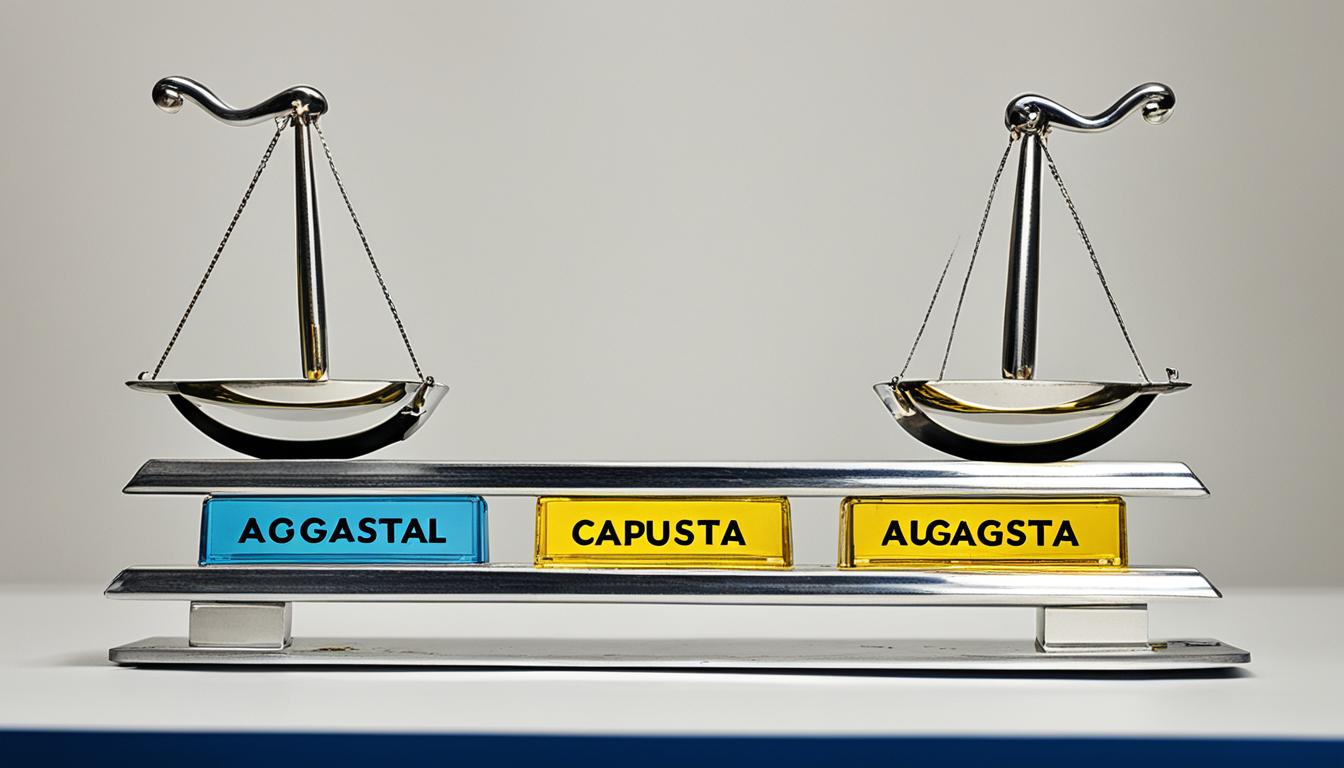Understanding the 401(k) retirement plan is crucial for ensuring financial stability. It is a tax-advantaged savings plan where employees contribute pre-tax income for retirement. Employers often match a percentage of these contributions, offering potential tax benefits. Choosing between Traditional and Roth plans depends on tax implications and withdrawal flexibility. Be mindful of IRS contribution limits, employer matches, and withdrawal rules to maximize your savings. Investing wisely and diversifying your portfolio can yield average annual returns of 5-8%. Remember, changing jobs can impact your 401(k). Assess your options carefully to maintain control over your financial future and retirement savings growth.
Key Takeaways
- 401(k) is a tax-advantaged retirement plan.
- Consider Traditional vs. Roth contributions for tax benefits.
- Know the tax implications and withdrawal flexibility.
- Understand contribution limits, matches, and withdrawal rules.
- Maximize tax advantages and investments for financial security.
What Is a 401(K) Retirement Plan?
401(k) retirement plans are important tax-advantaged savings plans commonly offered by employers to assist employees in saving for retirement. Employees contribute a portion of their pre-tax income to the 401(k) account, which then grows through investments. This employer-sponsored plan allows individuals to set aside a portion of their earnings towards retirement, with potential tax benefits. Employers may match a percentage of employee contributions, amplifying the retirement savings potential.
It's essential to understand the two main types of 401(k) plans: Traditional and Roth. In a Traditional 401(k), contributions are made with pre-tax dollars, reducing taxable income in the present. On the other hand, a Roth 401(k) involves after-tax contributions, potentially leading to tax-free withdrawals in retirement. Understanding these distinctions can help maximize your retirement savings and tax advantages.
Contribution Options: Traditional Vs. Roth

When deliberating between traditional and Roth 401(k) contributions, it's crucial to take into account the tax implications and withdrawal flexibility.
Traditional plans offer immediate tax benefits by reducing taxable income, while Roth plans provide tax-free distributions during retirement.
Understanding these key variances can assist us in making informed choices to maximize our retirement savings.
Tax Implications Comparison
Comparing the tax implications between traditional and Roth 401(k) contribution options is essential for maximizing retirement savings strategies. Traditional 401(k) contributions are tax-deductible, lowering current taxable income, while withdrawals are taxed as ordinary income in retirement.
On the other hand, Roth 401(k) contributions are made with after-tax money but allow for tax-free withdrawals if specific conditions are met. Understanding these tax implications is important for optimizing strategies to build a robust retirement fund.
Withdrawal Flexibility Differences
Understanding the withdrawal flexibility differences between Traditional and Roth 401(k) contribution options is vital for optimizing retirement savings strategies. When deciding between the two, it's imperative to take into account the tax implications and potential advantages each offers:
- Taxed as ordinary income: Traditional 401(k) withdrawals are subject to taxes at ordinary income rates, impacting your overall retirement income.
- Tax-free withdrawals: Roth 401(k) withdrawals can be tax-free if certain conditions are met, providing a potential tax advantage in retirement.
- After-tax dollars vs. tax-deferred contributions: Roth 401(k) contributions are made with after-tax dollars, offering flexibility in retirement, while Traditional 401(k) contributions are tax-deferred, leading to taxable withdrawals.
Understanding these differences can help you make informed decisions for your financial future.
Understanding Contribution Limits and Matches

In order to maximize the benefits of your 401(k) plan, understanding the contribution limits and matching policies in place is essential.
The IRS sets the annual limit for employee contributions, with the maximum being $23,000 in 2024 for those under 50 years old. Remember, the total contributions, including both employee and employer contributions, can't exceed $69,000 annually for individuals under 50.
Employers commonly match a percentage of your contributions, often up to 6% of your salary, with a typical match rate around 40%. It's highly recommended to maximize your contributions to capitalize on potential employer matches, as this can greatly boost your retirement savings.
Be aware that contribution limits are subject to inflation adjustments, so staying informed about any changes in IRS regulations is essential to make the most of your 401(k) plan.
Withdrawal Rules and Penalties

Let's shift focus now to the withdrawal rules and penalties associated with 401(k) accounts, particularly in cases of early withdrawals before reaching the age of 59 1/2. Understanding these rules is important as they can have a notable impact on your retirement savings. Here are some key points to keep in mind:
- Early Withdrawal Penalty: Taking money out of your 401(k) before the age of 59 1/2 usually incurs a 10% penalty on top of regular taxes.
- Exceptions Exist: Certain situations like disability or specific hardships may qualify you for an early withdrawal without incurring the full penalty.
- Impact on Growth: Early withdrawals not only result in immediate taxes but also diminish the long-term growth potential of your retirement savings.
Being aware of these rules and penalties is essential to avoid unnecessary financial setbacks and ensure that your 401(k) remains a solid long-term investment for your retirement goals.
Maximizing Tax Advantages

When it comes to maximizing tax advantages in a 401(k) plan, it's important to understand the benefits of tax-deferred contributions and consider the Roth 401(k) option for tax-free withdrawals in retirement.
By taking advantage of these options, we can optimize our retirement savings while minimizing our current tax liabilities.
Exploring these strategies can help us make informed decisions to secure a financially stable future.
Tax-Deferred Contributions
To maximize the tax advantages of a 401(k) retirement plan, consider making tax-deferred contributions. By contributing to a traditional 401(k) plan, you can reduce your current taxable income and allow your investments to grow tax-free until withdrawal.
Maximizing contributions to a traditional 401(k) can result in significant long-term tax savings. Understanding the benefits of tax-deferred contributions versus post-tax contributions like a Roth 401(k) is essential for making informed decisions about your retirement savings.
Roth 401K Option
Maximizing tax advantages through the Roth 401(k) option involves contributing after-tax income for potential tax-free withdrawals in retirement. Unlike traditional 401(k) plans, Roth 401(k) contributions don't yield immediate tax deductions but offer tax-free withdrawals upon meeting specific conditions.
This option is ideal for individuals anticipating a higher tax bracket during retirement, ensuring long-term benefits through tax-free withdrawals. By diversifying retirement savings with a Roth 401(k), one can strategically manage contributions and potentially optimize tax advantages.
Incorporating a Roth 401(k) into retirement planning can enhance financial security and provide a valuable tool for accumulating wealth over time. It's a prudent choice for those seeking to maximize tax benefits and secure a stable financial future.
Investing and Earning Potential

Investing strategically in a 401(k) can greatly enhance earning potential over time due to the average annual return ranging from 5-8%. When maximizing contributions and taking advantage of employer matching contributions, individuals can further boost their income for retirement.
Diversifying investments within the 401(k) portfolio is essential to optimizing earning potential and reducing risks. By harnessing the power of compound interest, account holders can watch their investments grow exponentially over the long term, outperforming short-term strategies.
Historical data supports the idea that long-term investments in a 401(k) tend to yield better results. This strategic approach, coupled with wise investment choices and a focus on long-term growth, can lead to a financially secure retirement.
Transitioning Jobs: What Happens to Your 401(K)?

After assessing the earning potential of investments in a 401(k) plan, understanding what happens to your account when changing jobs is a practical step towards securing your retirement savings. When shifting jobs, it's important to evaluate the options for your 401(k).
You can leave it with your former employer, but this might limit contributions and access to funds. Another option is to rollover your 401(k) into an IRA or your new employer's plan. This consolidation can provide more investment options and flexibility. It's vital to check if your new employer offers a 401(k) plan and learn about their rollover and contribution policies.
Leaving your 401(k) with a previous employer could result in administrative fees and limited investment choices. Before deciding, consider the tax implications, fees, and investment opportunities involved. Make an informed choice to guarantee your retirement savings continue to grow effectively. By understanding your options and making a strategic decision, you can maintain control over your financial future.
Planning for Retirement: the Bottom Line

As we approach retirement, securing a stable financial future becomes a top priority. When planning for retirement, the bottom line is vital. Here are three key considerations to maximize your retirement savings:
- Utilize Catch-Up Contributions: Take advantage of the additional $6,500 catch-up contribution allowed for individuals aged 50 or older. This extra contribution can greatly boost your retirement savings, ensuring a more comfortable future.
- Leverage Employer Matching Contributions: Employer matching contributions in a 401(k) plan are practically free money. Aim to contribute enough to receive the full match, typically around 3-6% of your salary. This matching can significantly increase your retirement nest egg over time.
- Avoid Early Withdrawals: Be cautious of early withdrawals from your 401(k) as they may incur a 10% penalty in addition to income tax. Instead, focus on diversifying investments within your 401(k) to manage risk and maximize growth potential for long-term retirement planning.
Frequently Asked Questions
How Does 401K Retirement Work?
Here's how it works: we contribute a portion of our salary to a 401(k) retirement plan, growing our funds with potential employer matching. Traditional contributions lower taxable income, while Roth contributions offer tax-free distributions.
How Does a 401K Work for Dummies?
A 401(k) for dummies simplifies retirement savings by allowing pre-tax contributions to grow tax-deferred or offering Roth options for tax-free withdrawals. Employers may match contributions, and diverse investment choices enhance potential gains.
How Much Money Do You Need in Your 401K to Retire Comfortably?
We aim to have at least 10-12 times our annual income saved in our 401(k) for a comfortable retirement. Seeking advice and using calculators can help determine the specific amount needed. Planning now guarantees security later.
What Is a Good 401K Retirement Amount?
Reaching retirement readiness requires a robust 401(k) amount, typically recommended at 10-15% of income. Saving diligently facilitates a secure future. Harnessing employer matches supercharges savings, ensuring financial prowess. Start early and watch wealth grow!
Conclusion
To sum up, the 401(k) retirement plan is a valuable tool for saving for the future. By understanding contribution options, limits, and withdrawal rules, individuals can maximize their tax advantages and investment potential. Additionally, it’s important to stay informed about investment allocation options within the 401(k) to optimize growth based on your risk tolerance and long-term goals. By learning how a retirement plan works, individuals can make educated decisions about their contributions and employer matching opportunities. This proactive approach helps ensure a more financially secure future during retirement.
Remember, planning for retirement is a long-term commitment that requires careful consideration. For example, Sarah started contributing to her 401(k) early in her career and was able to retire comfortably at 65 with a substantial nest egg.
Start saving now to secure your financial future.











